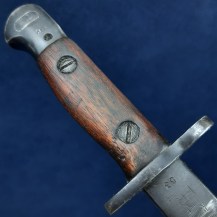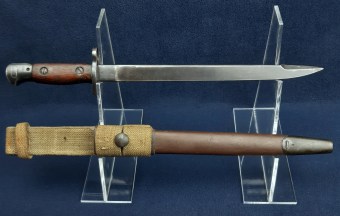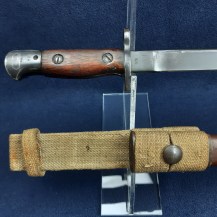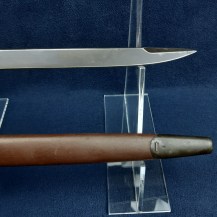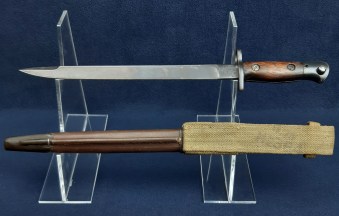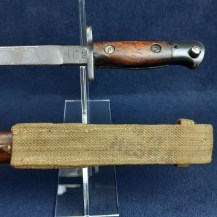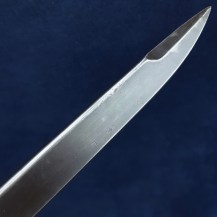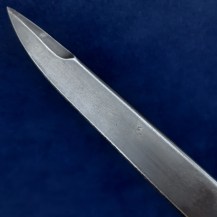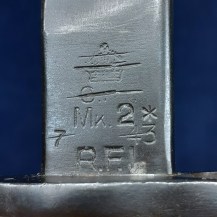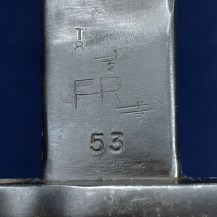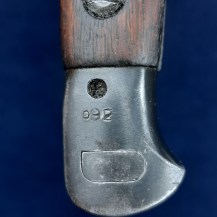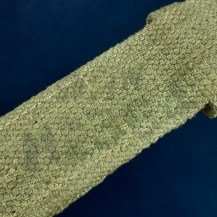Indian WW2 1907 Pattern Mk II* Bayonet, by Ishapore
Straight unfullered knife blade with clipped point and 2-inch false edge. Wood grips secured by two screws, beaked pommel with oil hole. Brown leather scabbard with steel throat and chape, khaki canvas frog with retaining strap. Blade 11¾ inches in length, the bayonet 16½ inches overall.
The bayonet is stamped on one side at the ricasso with the Tudor Crown, also known as the Imperial Crown for its use throughout the British Empire, ‘G.R.I’ (Georgius Rex Imperator, meaning George VI, who was the last Emperor of India until its independence in 1947), ‘Mk 2*’, the bayonet model, ’7 43’, meaning the bayonet was manufactured in July 1943, and ‘R.F.I’, meaning the manufacturer, the Rifle Factory Ishapore. Notably, the British crown and initials, as well as the manufacture date, have later been cancelled with strikethrough marks.
It is stamped on the other side with three Indian inspection marks, two of them visibly cancelled, as well as the letter ‘FR’ and ‘53’, indicating that the bayonet underwent Factory Repair in 1953. It is likely that while the bayonet was being refurbished, the British marks were cancelled to reflect India’s independent status – bayonets newly manufactured post-independence used the symbol of the Ashoka in place of the imperial crown.
The pommel is stamped next to the oil hole with ‘092’. The scabbard is stamped at the throat with a broad arrow War Department stores mark, as well as the letter ‘R’. There are faint inked markings on the rear of the belt frog, which I think read in part ‘M236’.
The use of the Arabic numeral ‘2’ for the model number is also curious, as other examples I have seen use the Roman numerals ‘II’. Inconsistent or even incorrect factory stamping is a known phenomenon with Indian bayonets - See British & Commonwealth Bayonets by Skennerton & Richardson, p348 and 349.
These bayonets were made to fit the many SMLE No. 1 rifles made at Ishapore. The Mk II began the process of progressive simplification of the 1907 Pattern in Indian service, having a new unfullered blade (the Mk I used shortened original blades) but the hilt, grips and pommel were all left unchanged. Later models modified the pommel and grips to further reduce the number of manufacturing steps required. The Mk II* was simply the Mk II with the addition of a false edge to the blade.
The blade, hilt and pommel retain their original blued finish except on raised edges like the locking button, as do the throat and chape pieces of the scabbard. A few small dents to the wood grips, one small chip on one side next to the pommel. The scabbard leather is very good with only a few light dents and abrasions.


